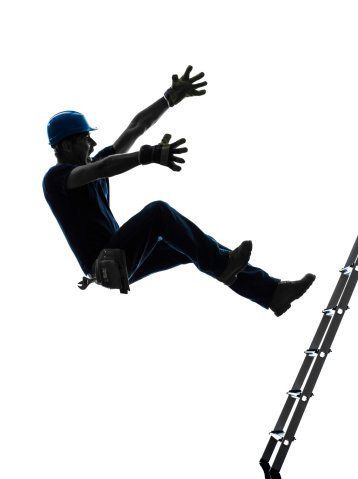
They will be visiting construction sites across NSW to ensure compliance and raise awareness about the risks when working at heights.
This blitz is geared towards saving lives and has been prompted by a tripling of falls incidents reported to us over the last five years, with the majority occurring in the construction industry. So far this year, eight workers have been killed – and many more suffered catastrophic injuries.
Myles Lowry knows all too well the terrible consequences when workplace safety goes awry. He was severely injured when he fell four metres onto a concrete slab on a mid-north coast construction site.
An additional and alarming statistic reported by SafeWork Australia is that nearly half of all fatalities in construction last year occurred between October and the end-of-year. SafeWork NSW aim to make sure all tradies are safe and sound this Christmas.
The blitz coincides with the introduction of tough new laws, where employers can be fined up to $3600 for failing to control the risk of falls adequately.
Fall prevention deserves your attention.
The Protection of the Environment Operations (Waste) Regulation 2014 introduced new requirements for waste transporters to record the movement of more than 100 kilograms of asbestos waste or more than 10 square metres of asbestos sheeting.
What problem led to the change?
Exposure to
airborne asbestos fibres, even in small quantities, can lead to significant
health risks. Whilst environmental risks caused by asbestos are minimal,
potential life-threatening illnesses caused by asbestos fibre exposure include
asbestosis, lung cancer and mesothelioma.
Illegal dumping
of asbestos may lead to increased exposure of individuals to asbestos fibres
and thus increase the risk of asbestos-related illnesses. The risk of exposure
increases when asbestos is dumped close to communities or sites that people
frequently visit.
The changes
will increase the EPA’s oversight of the removal, transport and disposal of
asbestos waste. They will also strengthen the EPA’s enforcement capabilities
and protect human health, which is consistent with the objectives of the
Protection of the Environment Operations Act 1997.
How
will this effect asbestos waste transporters and asbestos disposal facilities?
The waste regulation requires transporters of asbestos to record information about the movement of asbestos waste loads from the site of generation to the final disposal point. To make this easy, the EPA has developed an online system called WasteLocate to ensure asbestos waste is disposed of lawfully in NSW and to assist transporters of these materials to fulfil their legal obligations.
WasteLocate uses QR codes, accessible through mobile devices, to monitor the movement of asbestos and tyres from place of generation to a lawful disposal facility.
The WasteLocate page has more information on this new tool and the asbestos flyer explains how it affects the asbestos industry.
Each year there are dozens of serious incidents where workers have fallen from ladders. While workers in construction, retail and building maintenance are most commonly injured, any worker using a ladder – at any height – is at risk.
So what can you do to avoid becoming a statistic?
The first thing to consider is whether you really need to use a ladder for the job. Ladders should only be used for simple access jobs or for a short duration. If you can work from ground level or using an alternative like scaffolding; do so.
But if a ladder is your only option, here are the 10 golden rules that can help you avoid injury.
- Choose the
right ladder for the job. It should meet Australian standards and the load
requirements of the job.
- Inspect the
ladder for damage before each use.
- Only use a
ladder if you are physically capable of doing so.
- Always set up
the ladder on a flat, stable surface. Consider safety devices like leg
levellers, anti-slip gutter guards and stabilisers.
- Always maintain
three point of contact with the ladder. This means two hands and one foot, or
two feet and one hand on the ladder. Never lean or reach away from the ladder
while using it.
- Only take small
items up or down a ladder and items that allow you to maintain three points of
contact.
- Never exceed
the working load limit on the ladder. Remember to include the weight of your
tools.
- If you’re using
an extension ladder, secure it at the top, bottom or both. If this isn’t
possible then have someone hold the ladder. If you’re using an A-frame ladder,
make sure it’s fully open and locked.
- Extension
ladders should be angled at a ratio of 1:4. That is, position the base of the
ladder 1 metre away from the structure for every 4 metres of height.
- Do not climb
past the second-top rung of a ladder, and never straddle the top of an A-frame
ladder. When climbing down, face the ladder and climb to the bottom rung before
stepping off.
